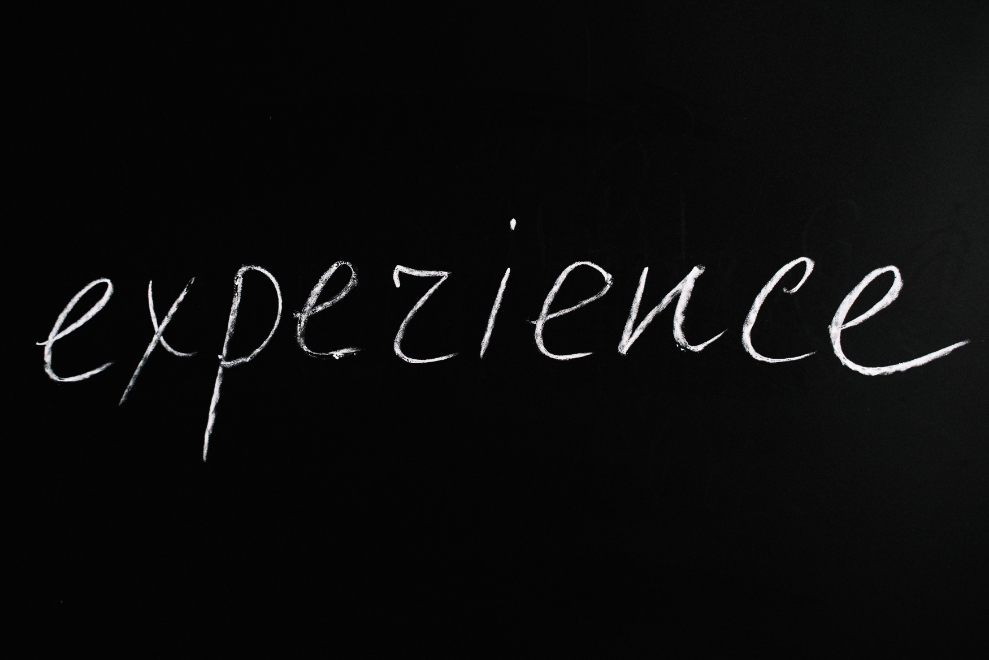
Insights & Opinions
6 Lessons Learned About Customer Experience in B2B
Tue, 03 Nov 2020

Customer experience (CX) is so vital for the banking industry, and yet… if there is one thing I learned last week (October 29th), it is that there are so many misconceptions about it, even more in B2B than in B2C. Although a one-hour discussion was not enough to clear all the fog around the complexities of CX in B2B, it was a good start.
Our special guests Els Dhaeze, CX Companion, and Frederique Kamp, Expert Lead Value Propositions at ING Wholesale Banking ignited inspiration and an appetite to grasp the learnings of the day to do better in the future.
This post shortlists my six learnings, the ideas that may help you in understanding why maybe some of your B2B CX projects succeeded or failed and how to do better in the future.

1: Do not mix CX with user experience (UX)
I admit it now, too often I confused it with UX. The recent developments in the CX space may play a role here. CX evolved a lot over the last ten years, predominantly in the B2C area.
Technology and digitalisation created a new competitive area around B2C companies which forced them to rethink the element of convenience regarding the products they sold. Companies could no longer afford to be a pure product expert; they needed to step more in the shoes of their customers to make their life easier in buying or consuming the product.
Els: “UX means that you are using something: you have an experience or perception about using something. CX is broader than that.”
A rookie mistake? Maybe, but quite an essential one, Definitely in a B2B context.
B2B has the complexity to have a third layer in the equation, next to the user and the customers:
- The client: the company you do business with
- The customer: the decision-maker, this could be the CEO, CFO, procurement…
- The user: the one using the tool or product you sell
People that are not familiar with this vocabulary are common.
Frederique works at ING, a leading bank in CX, and yet: “Although we make clear distinctions, it remains confusing. You constantly need to mind what you say and be consistent in the wording. This requires very attentive listening and speaking. Especially in the decision-making process, this is complex, where sales talks to the treasurer, but they never get in touch with the end-user.”
2: Digital experience is not CX per se
Banks must go digital, they say. Digital transformation is about the customer, they say. Well, guess what: CX is so much broader than that.
As Els put it: “Uptake of digital banking solutions is about convenience, and convenience is easy to copy. CX is not. With the right people, budget and suppliers, you can easily create more accessibility through digital tools. It is within the service and experience part that you can differ from your competition.”
Frederique: “For me, CX is about consistency and authenticity. That is very hard to realise, but also very hard to copy. As a company, you decide who you want to be, and you have a particular customer in mind. No other company can copy that if you are authentic and consistent in that, from your salesperson to your dev-ops engineer in Mumbai, up to your operational person in Manila.”
Coindicently Andrew Vorster recently interviewed a James Dodkins, a CX coach for the Innovation Monsters & Myths show. He argued that in CX you got to focus on what outcome the customer is trying to achieve. You must ask yourself why the customer is there in the first place and what outcome he/she expects.
Andrew: “So often, when I’ve seen people’s customer journey maps, they start with the first time a customer touches their company. They end where the customer does not touch the company anymore. But actually, his point is that the experience needs to be much broader and much wider. The minute you open your eyes to that, it opens so many more opportunities.”
What does this mean for banks?
Most features in a banking app are copied from the competition, or implemented to reduce costs. This is not CX; this is lipstick on a pig. There was no customer or little consideration of the customer in the equation. Designing a chatbot, or creating a multibank transaction overview can be a great digital experience, but that does not mean it is a good CX for your organisation.
Real CX starts with “why”, and puts your customer at the centre in answering that question. Not the user, not the client, but the customer. This second lesson may sound high-level, but that is what CX is: CX is a strategic consideration.
3: CX is a strategic choice
CX means that you have a clear idea of what products or services you offer, in which way you want to offer them. If you do this consistently, it inherently means that you also selected the type of customer you want to provide it to.
Frederique: “You choose to be a particular bank, and you think what kind of products or services you want to provide. This also implies that you exclude customers that don’t like your product. By being authentic, by knowing who you are and what you want to be, you also exclude certain clients that are not interested in you. That should be an explicit choice.”
ING chooses to be a wholesale bank in the digital world, and this influences the type of customers that they attract. They are more digitally savvy and more open to co-create new digital services.
Frederique is convinced that the explicit choice of Ralf Hamers to introduce agile and facilitating leadership helped the organisation in becoming more customer-oriented:
“We can only be customer excellent if we have excellent employees. Excellent employees can only grow with excellent leadership.”
CX is a strategic choice that impacts everything and everyone in the company, not just the product development team.
4: Managing expectation is also part of CX
Many studies have shown that easy access, mobile and digital tools in private life influenced the expectations in the B2B context as well. Frederique: “CX is about expectations, it is about feelings, and that is why you should always listen to the customer.”
Els: “In a B2B company, you have different people, and the magic of CX is to realise that the CEO has completely different relationships and expectations from a product or service than the one that deals with the administration to update the system. The needs, or what we call in CX language, the job to be done for that administrative person, is probably another experience that you need to create than for that CEO.”
Sometimes you adapt your services to fulfil the customer expectations, and sometimes you explain why their personal experience is different from their professional life. In wholesale banking, KYC and international payments are what they are, not because of internal decisions, but because of the regulator. A customer will understand this if you explain it.
5: The biggest challenges of CX in B2B
In B2B, companies often work with third parties, for example, to sell their products, or for maintenance services.
For Els, the biggest challenge is how to make sure that these intermediaries support you in the strategic choices you made. How do they assist you in delivering a consistent CX?
Only good partnerships can create a consistent CX across the entire process. As we learned in other blogs, that is challenging. It requires a lot of understanding and communication, especially when you work with independents who may have different objectives than yourself in serving the customer.
In an international context, there was less consensus on what the biggest challenge is. Many people answered it is culture, with the popularity of cheques in France, and cash in Germany as examples that global banks simply cannot ignore.
In that respect, I liked Els’ intervention. She acknowledged the difficulty of culture. However, just like understanding any customer segment, the difficulty of culture can be overcome.
“However”, she said, “dealing with the operational elements to give all your customers the same experience is still a struggle. Digitalisation will help in that, but in most B2B companies, we are not at the right level yet, in a broad sense, not purely in a banking context.”
6: The impact of COVID-19 on CX is yet to come
COVID-19 changed the ways banks interact with their customer, but thus far, this remained a tactical and operational game. Els: “Yes, the way we communicate with our customers has changed. That is clear. Sales representatives cannot go to customers anymore, and they need Teams of Zoom to communicate.
This doesn’t mean though that the company is more customer-oriented with a bigger focus on CX. What I see today is that so many companies are desperate to losing turnover that they push the customer much harder and not listening or understanding how to come with solutions.”
This insight triggered a debate on how customers and end-users in the B2B banking space suddenly started comparing the digital experience of the banks they had a relationship with. Where in the past banks often used to digitise because they needed to reduce costs, suddenly customers ask for better digital services.
On the long-term, COVID-19 will undoubtedly impact CX in the B2B space, but to have it ingrained in a company’s strategy takes longer than just a few months.
Conclusion
I want to thank Els Dhaeze and Frederique Kamp for helping me better understand CX. In only one hour, I got a crash course on how wrong I was in my idea of CX and how strategic this is.
The importance of good partnerships and alignment across the organisation are two topics that came back frequently in different Afterwork sessions; it was revealing to hear yet again how this can make or break organisations.
Banks are now designing the services of tomorrow. I hope that this post can be an inspiration for many. If there are any more questions about this, I am sure that Els Dhaeze or Frederique Kamp, and even Andrew Vorster are more than willing to assist you.